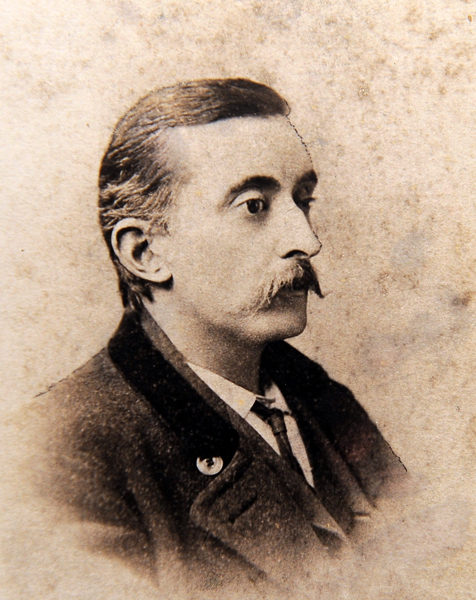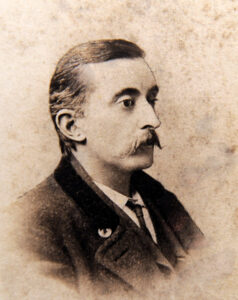Nature Writing
From the time of colonial exploration to the present, Louisiana’s landscape has inspired a rich variety of nature writing.

Courtesy of The Historic New Orleans Collection
Lafcadio Hearn. Unidentified
From the time of colonial exploration to the present, Louisiana’s landscape has inspired a rich variety of nature writing. The earliest-known written reflections on Louisiana’s woodlands and waterways were by the European explorers who first arrived in the area in the sixteenth century. An early account of the Mississippi River in Louisiana, for example, comes from Álvar Núñez Cabeza de Vaca (ca. 1490–ca. 1560), who was part of a Spanish expedition that visited Louisiana after sailing west from Florida in 1528.
From these early reports grew a tradition of Louisiana nature writing that has become more colorful and speculative. Among the more celebrated early practitioners of this style was John James Audubon (1785–1851), who is best known as a bird artist but who was also a memorable prose stylist. He created some of his best nature writing in Louisiana. Audubon lived and worked in Louisiana at various times between 1821 and 1837, often recording his experiences in a journal that offers a detailed portrait of the fauna and flora of nineteenth-century southern Louisiana.
While working as a New Orleans journalist from 1877 to 1887, Lafcadio Hearn (1850–1904) popularized Louisiana nature as a wellspring of dark mystery, most notably in Chita: A Memory of Last Island, an 1888 novella about a hurricane that landed near New Orleans in 1856. Kate Chopin (1851–1904) advanced a similar view of nature in Louisiana in her 1899 novel The Awakening and in “The Storm,” a story written in 1898.
While living in Louisiana during various periods between 1838 and 1867, German travel writer Friedrich Gerstacker (1817–1872) offered a vision of Louisiana as a sportsman’s destination, especially in his descriptions of the Red River, which he traveled via canoe toward Shreveport. Many of his accounts deal with his experiences as a hunter. Louisiana’s reputation as a sportsman’s paradise was also popularized by the nature narrative of Theodore Roosevelt (1858–1919), who, after his presidency, wrote of his experiences hunting in the canebrakes of north Louisiana in 1907. “On the trip, all told, we killed and brought into camp three bear, six deer, a wild-cat, a turkey, a possum and a dozen squirrels; and we ate everything but the wildcat,” Roosevelt told readers of Scribner’s Magazine in 1908.
A subsequent generation of writers used Louisiana’s landscape as a backdrop to explore more troublesome implications of man’s relationship with nature. Among them was Lyle Saxon (1891–1946), whose Father Mississippi, published in 1927, chronicled the cultural history of the Mississippi River and the Great Flood of 1927. The same theme would be explored many years later in Rising Tide, John M. Barry’s 1997 bestseller about the flood.
Much more recent nature writing has focused on the fragility of Louisiana’s coastline, as in Bayou Farewell, Mike Tidwell’s 2003 account of coastal erosion. America’s Wetland, a 2005 chronicle of the same subject by Mike Dunne, with photographs by Bevil Knapp, anticipated the coast’s diminished ability to slow storms such as Hurricane Katrina, which struck Louisiana shortly after the book was published. Author Mary Ann Sternberg expressed equal urgency about the need to protect wetlands in Winding through Time: The Forgotten History and Present-Day Peril of Bayou Manchac, published in 2007. In Atchafalaya Houseboat, a memoir published in 2006, author Gwen Roland evoked the tradition of Henry David Thoreau while recalling a period she spent in the Louisiana swamp in the 1970s. Roland’s story, complemented by photographs by C.C. Lockwood, drew national attention.
Ironically, one of the most celebrated texts evoking Louisiana nature, Henry Wadsworth Longfellow’s 1847 narrative poem “Evangeline,” was written by a poet who apparently never visited Louisiana. Longfellow (1807–1882) wrote his poem, which is set largely in the swamps of Acadiana, based on artistic and literary renderings of the area by others, including Audubon.
